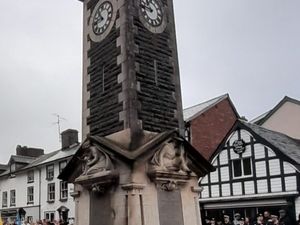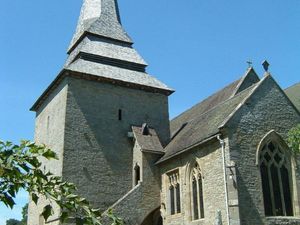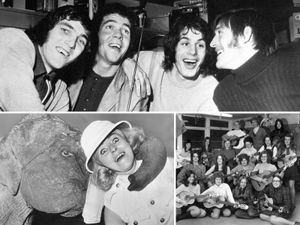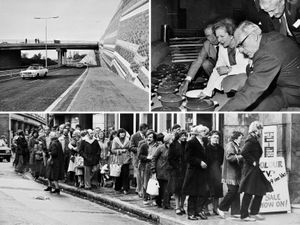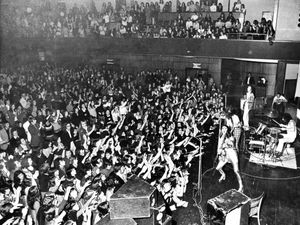The ghost that made a landmark Shropshire church change direction
If churches can be cursed, then maybe that is an explanation for the misfortunes which befell Jackfield's old church.
The landmark building on a knoll was dubbed "The Red Church" because of its red brick, but became a white elephant, disused for decades with cows taking shelter in the nave, and a place of legends and folklore until it was finally demolished.
For one of those legends, we turn to an account by William Reace Evans, of Church Road, Broseley, written in 1927.
His grandmother, Jane Reace Evans, nee Field, who was born in 1813 and lived until she was 80, and her family had old writings about the church which she would tell younger members of the family.
It was said to have been founded in about 1779 by Lady Mary Blyth, who stipulated that the building must be built on an east-west axis.
"At first, however, the builders contended, as it was a chapel of ease to Broseley, it ought to face that way, and commenced building it so," he said.
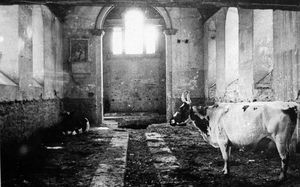
"However, the work never rose above the ground for some time, as it was pulled down and scattered about each day as the work progressed.
"At last, it was felt that something was amiss; and that the cause of it was a ghostly visitant."
It was decided to wait for the apparition and ask what the trouble was.
"This was done, and the apparition of Lady Mary answered that the church was not being built according to her wishes; if it were done so, she would rest, and that she it was who had with God's help torn the work down.
"She asked for her body, which had been interred at Broseley, to be reinterred in the church when built."
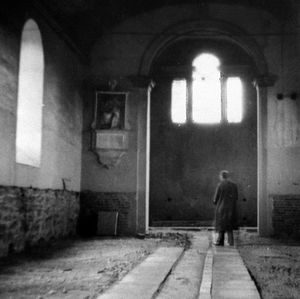
A promise was given, with the church thereafter being built according to her wishes. There was a tradition that she was buried under the chancel.
His grandmother's uncle, barge owner Richard Field, said he would not believe the story unless he could see things for himself.
So one day, while waiting for his barge to be loaded at Coalport, he paid a visit to the church building works at midnight.
He was found next morning with his right leg broken in two places near Caughley China Works, a considerable distance from the church.
Mr Evans said the church, which was dedicated to St Mary, had a sweet-toned bell in the key of D.
"I was the man who last rang it for service as recently as 1916 or 1917."
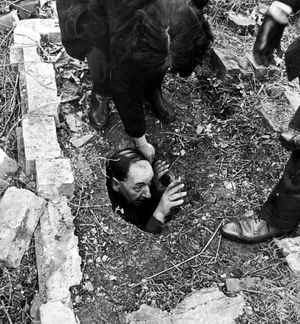
The bell had been presented by Mrs Elizabeth Brown, of Ladywood, in memory of her husband. It was cast by Rudhall, of Gloucester, and brought up the river by barge.
The bell was at one time transferred to the new Jackfield church, but the steeple there was not suitable for swinging a bell, and there was an outcry and it was restored to the old church.
Part of the church clock was transferred to Broseley Town Hall and the original dial was used there.
Mr Evans said the new Jackfield church had been built in 1863 as a memorial to a member of the Pritchard family of Broseley.
"It was not really because the 'red' church was unsafe that this was done. The old church was still serviceable, having been banded and the foundations made secure."
He said it was mainly through neglect and apathy by several incumbents that the Red Church had fallen into decay.
Mr Evans said the field fronting the church was called "the Cholera Piece" following a 19th century epidemic, with a number of victims buried there.
Superstition was rife, so those who died of cholera were, for the most part, not buried in consecrated ground, or if they were, it was at night and secretly.
The church, also known as “the red church on the hill,” was abandoned after becoming unsafe through ground movement and its demolition took place in the early 1960s – our archive has a picture of the derelict building taken on or about August 25, 1960, with the caption saying that its days were numbered.
It was not to rest in peace, with a family tomb being smashed open and coffins damaged in the graveyard in April 1966.
Local undertaker Mr J.A. Russell descended into the tomb to inspect the damage, speculating that the culprits had wrongly thought that the coffins were lined with lead.
However a story got around later – which was never reported – that the culprits were students from Walker Technical College who had broken in and taken the head of Silvanus Williams. He was one of the last to be buried there, in 1932, his wife, who died in 1952, being the last of all.
Incidentally at the time Mr Evans had been writing in 1927, the church had already long fallen into disuse, and oak pews had just been sold for "a substantial sum."
Some of the oak from the church had been used in the war memorial at the new St Mary's church.

